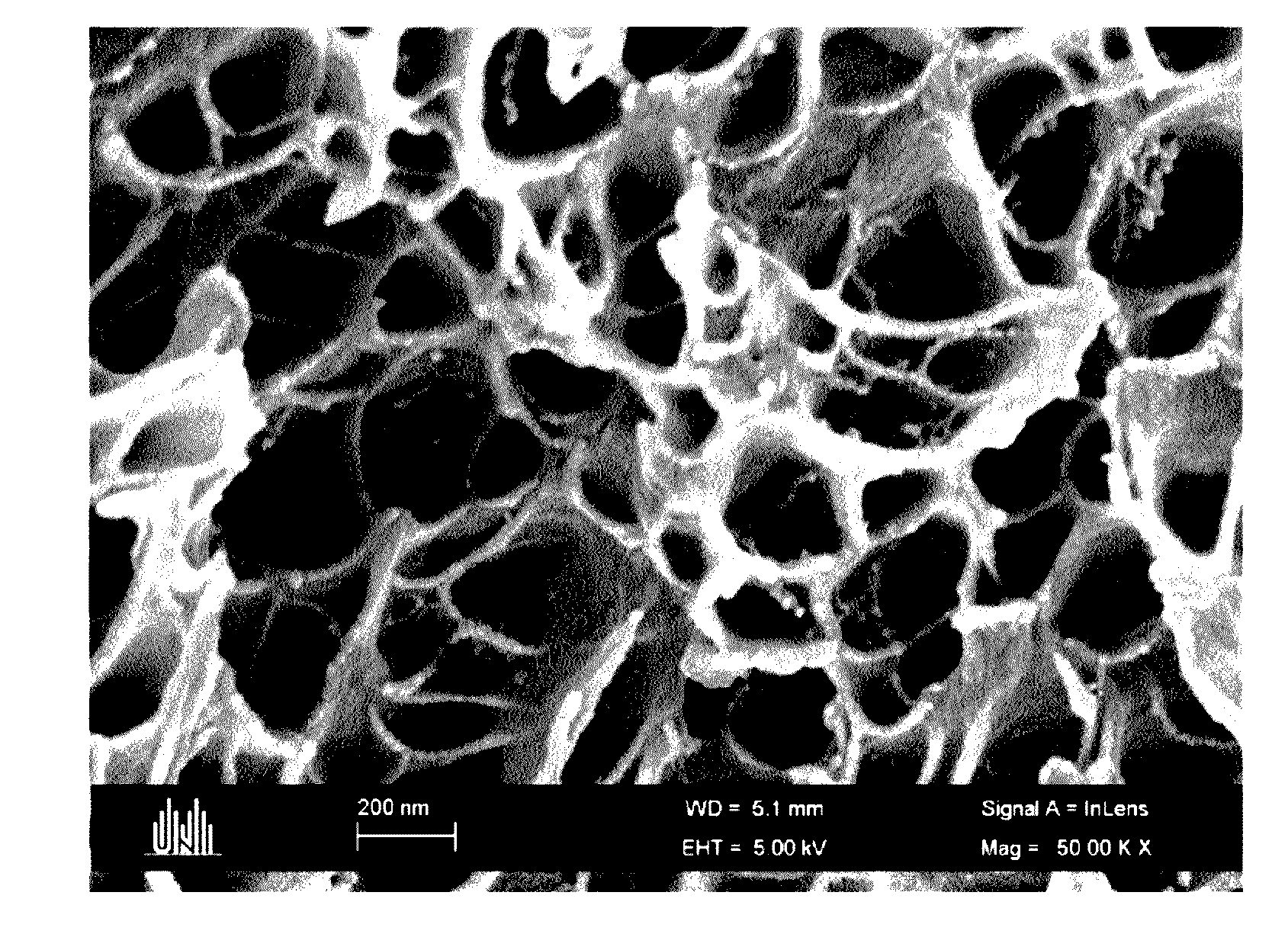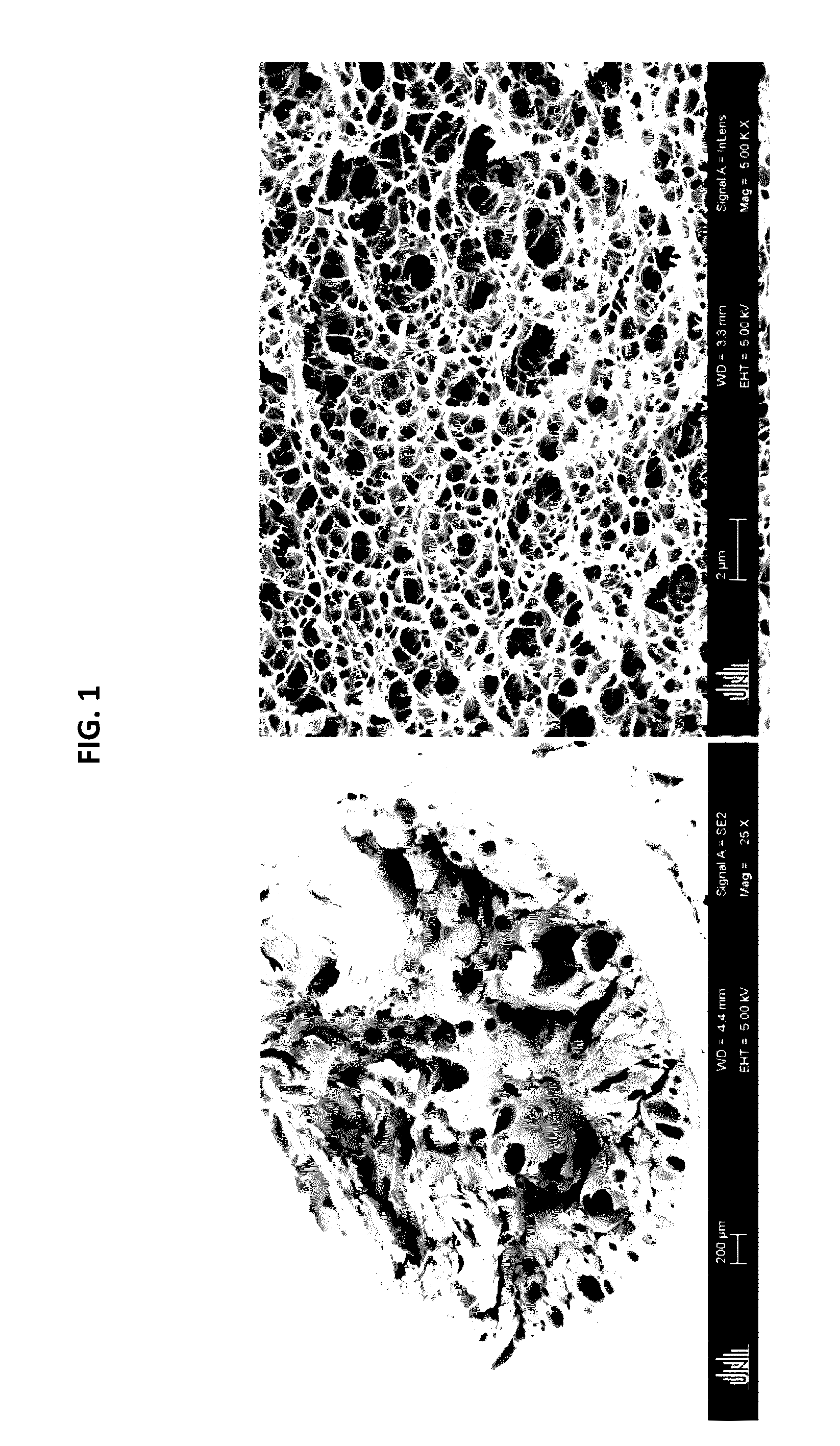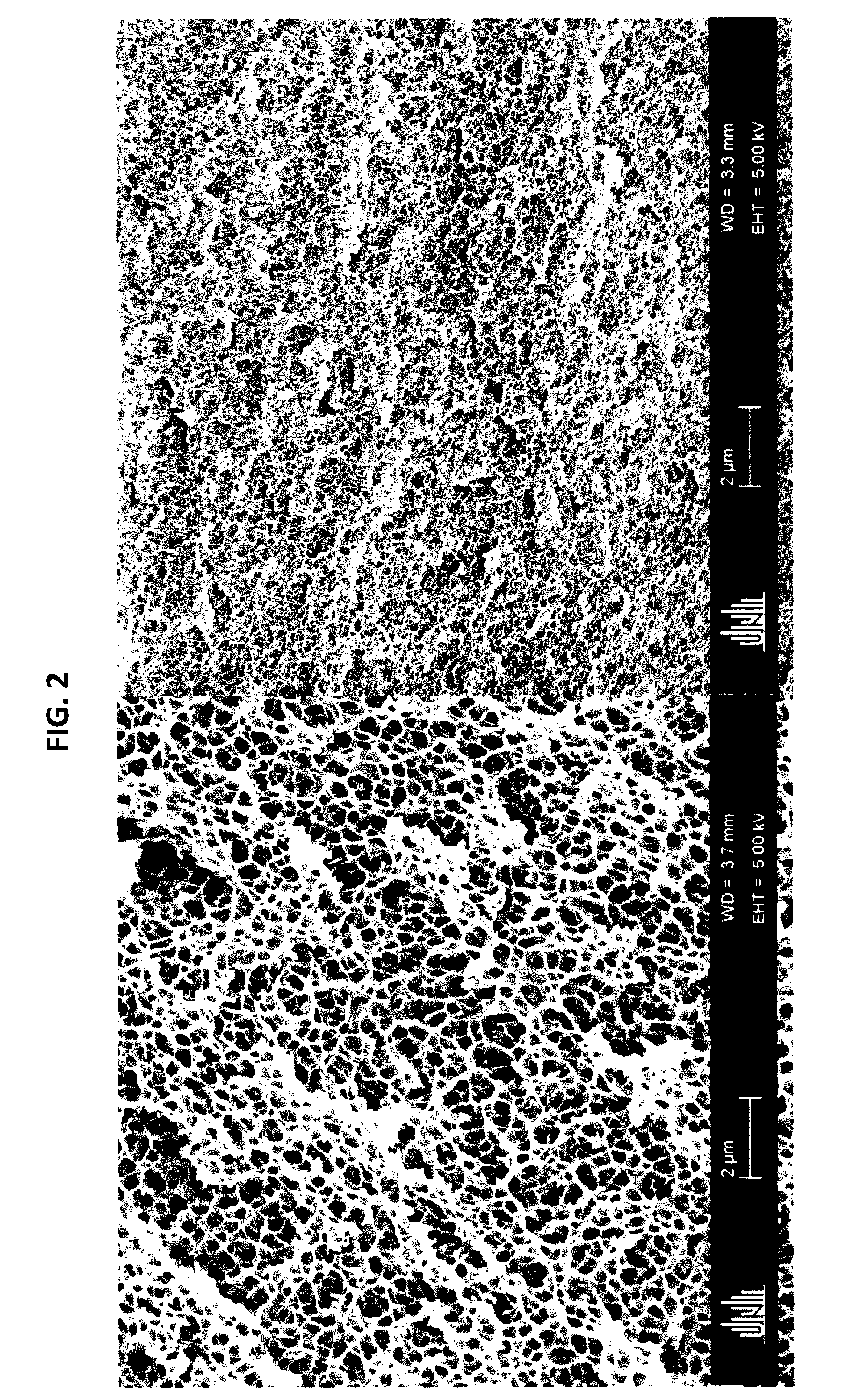Production of porous materials by the expansion of polymer gels
a polymer gel and expansion technology, applied in the field of nanoporous materials, can solve the problems of inability to achieve the effects of large-scale implementation of nanoporous materials, high temperature, and high saturation time, and achieve the effect of accelerating gel production, long saturation time, and easy process implementation
- Summary
- Abstract
- Description
- Claims
- Application Information
AI Technical Summary
Benefits of technology
Problems solved by technology
Method used
Image
Examples
example 1
Polymethyl Methacrylate (PMMA) Nanofoams
Example 1.1
Production of a PMMA Nanofoam by the NF-GAFFEL Method
[0102]A PMMA gel was prepared by adding acetone to a sample of a conventional acrylic glass and subsequently foamed with CO2. The expansion time texp from the initial pressure p=250 bar to the normal pressure of 1 bar was approx. 1 second. The mass ratio of PMMA to acetone in the polymer gel was 1:3 (λacetone=0.75). The gel was contacted with CO2 in a high-pressure cell at p=250 bar, T=55° C. and t=15 min and subsequently expanded. FIG. 1 shows the foam structure at two different magnifications.
[0103]The gel / foam composition was: σ=unknown, acetone λacetone=0.75, n=unknown, ρ=unknown.
example 1.2
Production of a PMMA Nanofoam by the NF-GAFFEL Method
[0104]A PMMA consisting of the monomer methyl methacrylate (MMA) and the crosslinker N,N′-methylene bisacrylamide (MBAA) was polymerised using the radical starter azobisisobutyronitrile (AIBN) at T=95° C. and a period of 2 h. Example 1.2 illustrates the different impacts of two different crosslinker concentrations on the obtained foam structure. A polymer saturated with acetone was prepared and contacted with CO2 and foamed as in Example 1 at p=250 bar, T=55° C. and t=15 min. This example demonstrates the successful application of the NF-GAFFEL method using a PMMA sample with a precisely known composition.
[0105]The left-hand portion of FIG. 2 shows the effect on the resulting foam structure at a crosslinker content of v=0.2 mol % and the right-hand portion of FIG. 2 shows a distinctly smaller foam structure due to the effect of v=0.7 of crosslinker.
[0106]The gel / foam composition was: σAIBN=0.004, λacetone=saturated, vMBAA=0.20 mol...
example 1.3
Production of a PMMA Nanofoam by the NF-GAFFEL Method
[0107]A PMMA consisting of the monomer methyl methacrylate (MMA) and the crosslinker N,N′-methylene bisacrylamide (MBAA) was polymerised using the radical starter azobisisobutyronitrile (AIBN) at T=95° C. and a period of 2 h as in Example 1.2. Example 1.3 illustrates the effect of the foaming temperature on the foam structure. For this purpose the PMMA gel was produced as in Example 2 and contacted with CO2 and foamed at p=250 bar, t=15 min. The CO2 contacting temperature and thus also the expansion temperature was varied. The left-hand portion of FIG. 3 shows the resulting foam structure at T=35° C., in the middle portion the temperature was T=55° C. and in the right-hand portion the temperature was T=75° C.
[0108]The gel / foam composition was: σAIBN=0.004, λacetone=saturated, vMBAA 0.70 mol %.
PUM
| Property | Measurement | Unit |
|---|---|---|
| temperature | aaaaa | aaaaa |
| pressure | aaaaa | aaaaa |
| pressure | aaaaa | aaaaa |
Abstract
Description
Claims
Application Information
 Login to View More
Login to View More - R&D
- Intellectual Property
- Life Sciences
- Materials
- Tech Scout
- Unparalleled Data Quality
- Higher Quality Content
- 60% Fewer Hallucinations
Browse by: Latest US Patents, China's latest patents, Technical Efficacy Thesaurus, Application Domain, Technology Topic, Popular Technical Reports.
© 2025 PatSnap. All rights reserved.Legal|Privacy policy|Modern Slavery Act Transparency Statement|Sitemap|About US| Contact US: help@patsnap.com



